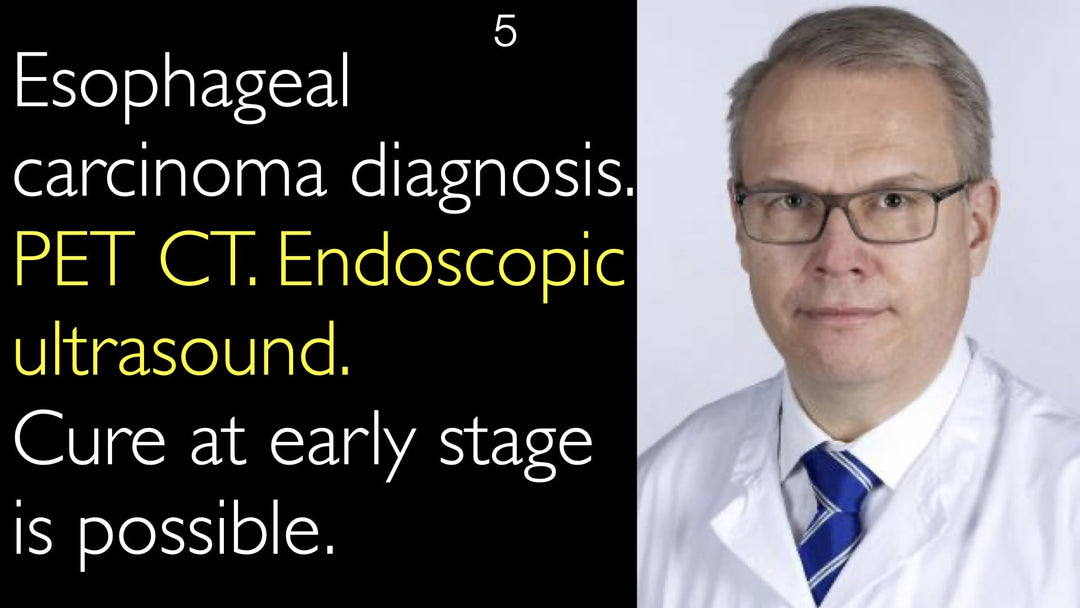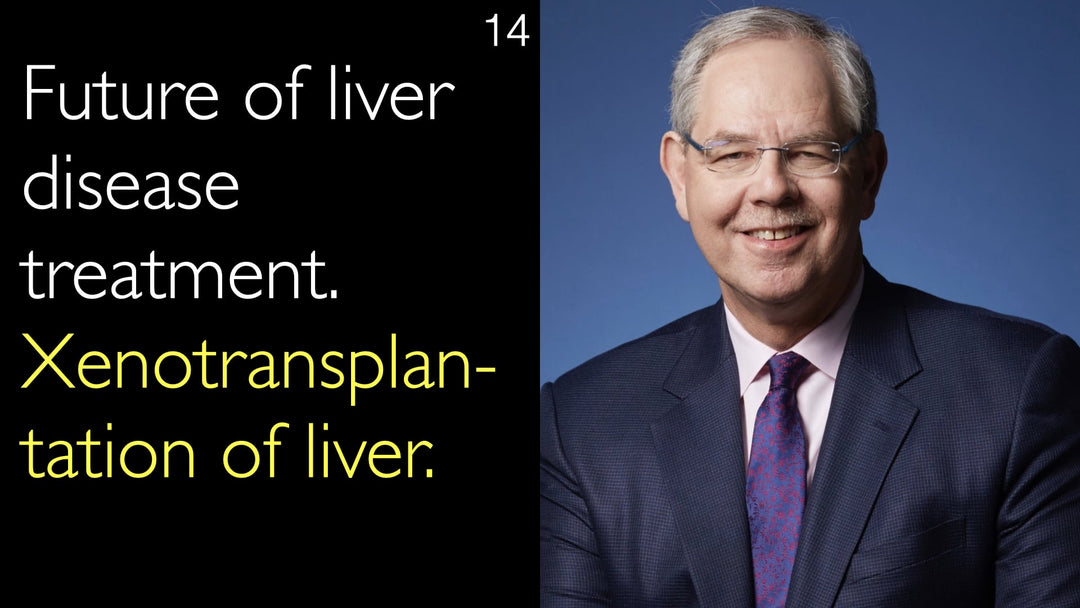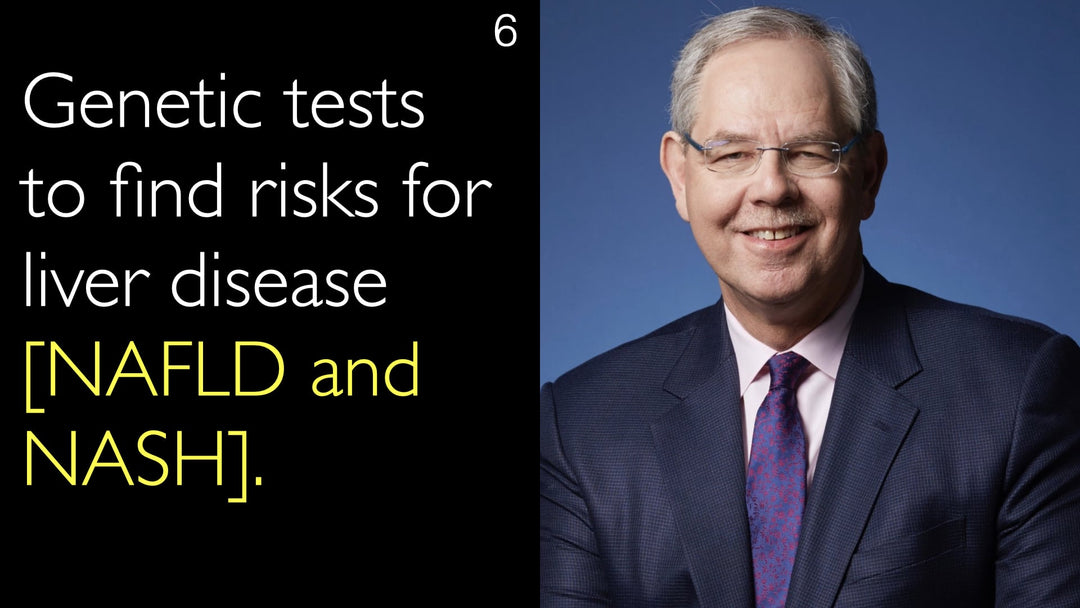Dr. Jari Rasanen, en førende ekspert inden for spiserørskræft, forklarer, hvordan moderne diagnostiske tests afgør den optimale behandlingsstrategi. Han belyser den afgørende betydning af PET-CT-scanning (positronemissionstomografi kombineret med computertomografi), endoskopisk ultralyd og CT-scanning ved udredningen af spiserørskræft. Dr. Rasanen understreger, at kurativ behandling er mulig, når sygdommen ikke har spredt sig til fjernorganer. Prognosen er fremragende for kræftformer, der er begrænset til spiserørets slimhinde.
Avanceret Stadieinddeling af Spiserørskræft: PET-CT, Endoskopisk Ultralyd og CT-scanninger
Spring til afsnit
- Diagnostisk proces for spiserørskræft
- Essentielle billeddiagnostiske undersøgelser til stadieinddeling
- Forudsigelse af behandlingsmuligheder ud fra stadieinddeling
- Vurdering af prognostiske faktorer
- Betydningen af tidlig opdagelse
- Fuld transskription
Diagnostisk proces for spiserørskræft
Den indledende diagnosticering af spiserørskræft starter med en gastroscopi eller øvre endoskopi. Dr. Jari Rasanen, MD, forklarer, at der under indgrebet tages en biopsi for at bekræfte forekomsten af karcinom. Denne histologiske bekræftelse er et afgørende første skridt, før nogen form for stadieinddeling kan iværksættes.
Essentielle billeddiagnostiske undersøgelser til stadieinddeling
En omfattende stadieinddeling kræver en kombination af tre centrale diagnostiske metoder. Dr. Jari Rasanen, MD, fremhæver behovet for en CT-scanning, en PET-CT-scanning og en endoskopisk ultralydsundersøgelse. Han bemærker, at selvom CT er bredt tilgængelig, bør et moderne hospital, der behandler spiserørskræft, også kunne tilbyde endoskopisk ultralyd. Kombinationen af disse tre undersøgelser muliggør en præcis sygdomsstadieinddeling.
Forudsigelse af behandlingsmuligheder ud fra stadieinddeling
Resultaterne fra PET-CT, endoskopisk ultralyd og CT-scanninger afgør direkte behandlingsforløbet. Dr. Jari Rasanen, MD, pointerer en afgørende opdagelse: hvis der ikke påvises fjernmetastaser, åbner det op for kurativ behandling. Denne vurdering kontrollerer for spredning af kræft til organer som lever, lunger eller knogler.
Vurdering af prognostiske faktorer
Præbehandlings-stadieinddeling giver vital information om patientens prognose. Ifølge Dr. Rasanen er dybden af tumorinvasionen i spiserørsvæggen en væsentlig prognostisk faktor. Kræft begrænset til slimhinden har en fremragende prognose. Prognosen forværres markant, efterhånden som kræften vokser dybere ind i spiserørsvæggen.
Betydningen af tidlig opdagelse
Dr. Jari Rasanen, MD, understreger den kritiske betydning af tidlig stadiediagnose for patientens udfald. Han fortæller Dr. Anton Titov, MD, at jo tidligere stadiet er ved diagnosticering, desto bedre er prognosen for patienten. Dette princip fremhæver vigtigheden af en hurtig diagnostisk vurdering, når spiserørskræft mistænkes.
Fuld transskription
Dr. Anton Titov, MD: Preoperativ stadieinddeling for spiserørskræft. Efter diagnosticeringen skal patienter gennemgå en detaljeret vurdering for at vælge de bedste behandlingsmetoder. Hvilke diagnostiske undersøgelser hjælper med at bestemme den bedst mulige behandling for spiserørskræft?
Dr. Jari Rasanen, MD: For det første stilles diagnosen spiserørskræft ved gastroscopi, øvre endoskopi. Derefter tages en biopsi fra spiserøret, og man kan fastslå diagnosen.
Stadieinddeling af spiserørskræft foretages på et moderne hospital, som behandler spiserørskræft. Der bør være mulighed for endoskopisk ultralyd og også CT-scanning, som er tilgængelig overalt, og også PET-CT-scanning. Alle disse tre diagnostiske test kombineres. Så kan man præcist stadieinddele spiserørskræft.
Dr. Anton Titov, MD: Kan du vurdere prognostiske faktorer baseret på den preoperative eller præbehandlingsvurdering ved PET-CT, endoskopisk ultralyd, almindelig CT eller kombinationen af disse diagnostiske undersøgelser?
Dr. Jari Rasanen, MD: Det kan man bestemt. Det vigtigste er, om patienten har fjernmetastaser af sygdommen, for eksempel i lever, knogler eller lunger. Hvis der ikke er fjernmetastaser, er kurativ behandling mulig.
Og selvfølgelig, jo tidligere stadiet, desto bedre er prognosen for patienten. Det betyder, at man kan fastslå, at kræft er begrænset til slimhinden i spiserøret. I så fald er patientens prognose fremragende.
Jo dybere kræften vokser ind i væggen af spiserøret, desto værre bliver prognosen.







